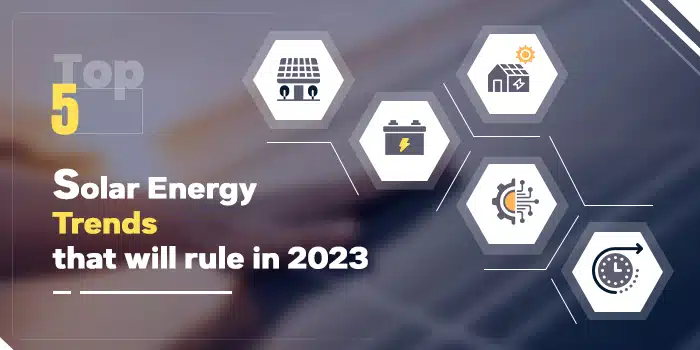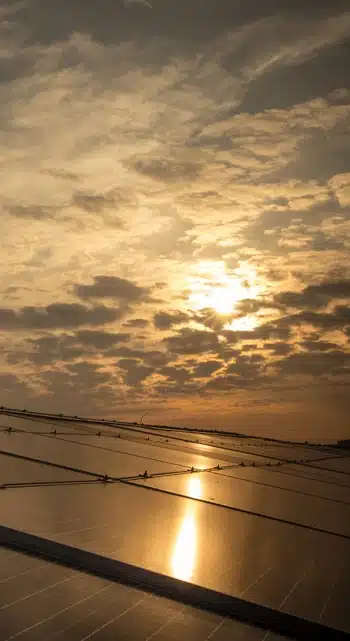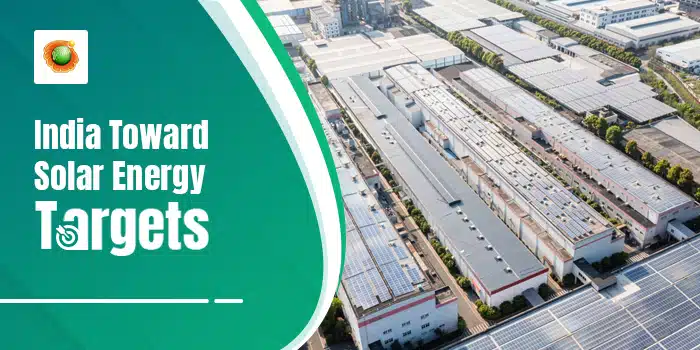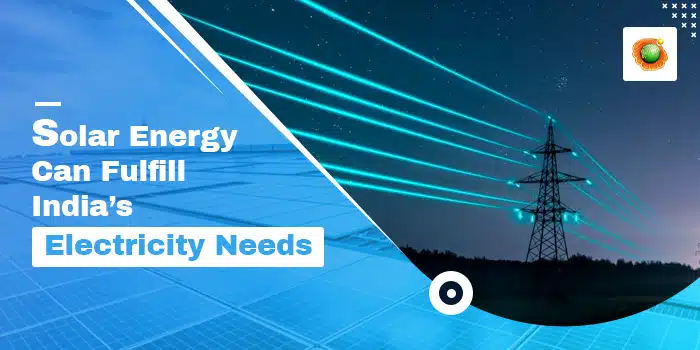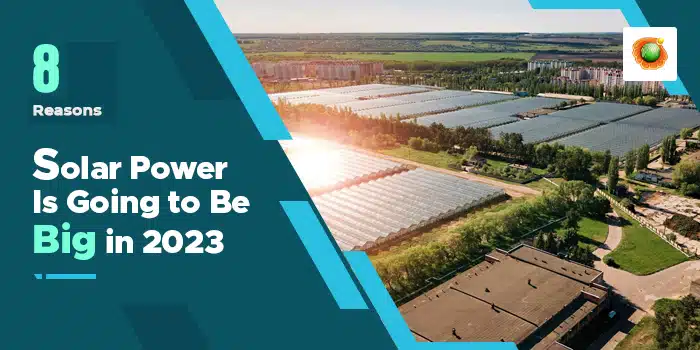The long-term energy problems that emerging nations like India have been experiencing could very well be solved by solar energy. In developing nations, particularly India, the difference between power supply and demand is growing at an alarming rate. Expanding solar energy production, which has a sufficient capacity to produce electricity, can cover this gap. This study presents the current developments toward the technological and economic potential of solar energy in India taking into account the availability, current situation, promotion scheme, recent investment, and techniques used for solar power generation.
As a kind of renewable energy, solar power is a rapidly growing sector in India. As of 1 June 2022, the nation’s installed solar capacity was 56.951 GW. The Indian government’s initial goal of 20 GW capacity for 2022 was met four years earlier than expected. In 2015, the goal was increased to 100 GW of solar capacity by 2022 (including 40 GW from rooftop solar), with a US$100 billion investment goal. To make land available to those who are promoting solar plants, India has developed roughly 42 solar parks. According to the Ministry of New and Renewable Energy, there are now 23.87 GW and 36.03 GW worth of solar projects in various phases of execution.
According to the Bloomberg New Energy Outlook 2018 study, by 2050 India would produce 75% of its total electricity from renewable sources, with 34% coming from solar energy and 32% from wind energy. India has constructed five of the ten largest solar parks in the world, and its solar market may soon surpass that of the United States.
The requirement of the hour is solar energy. It is past time for the nation to address the issue posed by the current energy shortfall and launch an energy revolution using solar energy.
-
Construction of Solar Parks
The solar park is a concentrated location for the construction of solar power generation projects. It gives developers access to a region that is well-defined, has the necessary infrastructure and facilities, and where project risk can be kept to a minimum. The Ministry of New and Renewable Energy (MNRE) has set a 2022 deadline for the construction of solar parks and 40 GW worth of ultra-mega solar projects. To make land available to those who are promoting solar plants, India has developed roughly 42 solar parks. The top 5 solar parks in the nation are located in the states of Rajasthan (2,245 MW capacity), Pavagada (2,050 MW capacity), Andhra Pradesh (1000 MW capacity), Madhya Pradesh (750 MW capacity), and Tamil Nadu (648 MW capacity).
-
Importance of Solar Energy
One of the largest gainers from solar energy is homeowners. They gain the following advantages from utilizing solar power. The advantages comprise:
- Cut back on electricity costs
- Outstanding Return on Investment
- Boost the value of your property
- Create jobs to boost your community’s economy.
- Government-sponsored assistance
Steps Taken By The Government
The installation of solar panels is now eligible for subsidies from the Central Government and several State governments. Haryana government has made it mandatory to build solar power plants on 500 square yard sites.
Solar rooftops are being marketed to consumers by real estate developers as a way to strengthen their brands. Additionally, all government and private educational institutions, universities, and workplaces with a connected load of 30 kW have been mandated to install solar power systems. Additionally, all private hospitals, industrial, and commercial establishments with a connected load of 50 KW.
By December 2022, the central government hopes to have installed 100 GW of solar energy capacity, making India a world leader in solar energy production. Consequently, different plans have been put up to accomplish the stated objective.
- The Jawaharlal Nehru National Solar Mission: The Mission has set the ambitious target of deploying 1,00,000 MW of grid-connected solar power by the end of 2022.
- Government Yojana: Solar Energy Subsidy Scheme: According to this scheme, a person is eligible for a subsidy if he has solar panels installed on the rooftop. The subsidy is decided as per the capacity of the solar power plant.
- UDAY Scheme: This scheme aims to reform the power sector, operational improvement, development in renewable energy, reduction of cost of generation of power, energy efficiency, and conservation.
- Solar Energy Corporation of India (SECI): The major goals of this program are to build large-scale and rooftop solar projects, direct investment toward the public sector, execute MNRE and VGF programs, provide project management consulting services, and engage in solar energy trading. SECI has also been instrumental in the installation of rooftop solar power systems. It has so far published tenders for 4307 MW of large-scale solar projects, 675 MW of which have already been put into operation. It has published tenders for around 200MW of rooftop projects, 46.5 of which have already been put into operation.
- Rooftop Scheme: Under the rooftop scheme executed by SECI, 200MW of projects have been allocated of which 45MW have been commissioned. Special schemes including 75MW for warehouses and 50MW for the CPWD have been launched.
Several programs, including the Solar Rooftop Phase II program, have been introduced to boost the generation and uptake of solar energy throughout the nation. Also, The Green Energy Corridor project was launched to aid in the grid integration of significant growth in renewable energy generation.
To Sum Up…
There are still up to 23 million homes (in more than 292,000 communities) without electricity. Given the steps our government is taking to promote renewable energy, there is reason to believe that solar energy will soon displace fossil fuels as the primary source of electricity for the entire nation by the year 2050. To make India more dependent on solar energy and position it as a world leader in solar energy, the ministry of new and renewable energy has undertaken numerous programs. To reach its aim of installing 100 GW of solar energy capacity by December 2022, the central government has established several missions and programs. Additionally, the automatic route for renewable energy has also allowed up to 100% Foreign Direct Investment (FDI).
